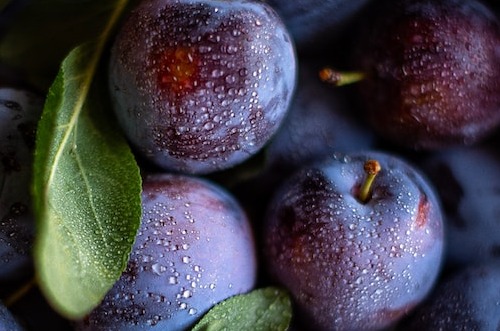W35: Plum & Prune Update

In W35 in the plum and prune landscape, the Stanley plum harvest commenced in Moldova, prompting a seasonal adjustment of purchase prices in the domestic fruit market. This seasonal price fluctuation, common in late August and early September, is influenced by the activities of traders, exporters, and processors. Although dessert plum export demand is rising, wholesale prices remained within the range of USD 0.34 per kilogram (kg) to USD 0.39/kg at the end of Aug-23. While this price level aligns with recent years, the average wholesale price for plums in 2023 is slightly higher than in 2022.
The 2023 plum harvest in Moldova is anticipated to surpass 100 thousand metric tons (mt). However, Moldovan plum quality is expected to vary across regions due to different growing conditions. Some orchards produced large plums, while others had smaller sizes. Additionally, extreme heat in Jul-23 and Aug-23 led to overripe plums in some areas. This situation increased the supply of low and medium-quality plums, which may be more suitable for processing. The Moldovan plum export peak is anticipated in Oct-23 and Nov-23, with some farmers storing their best-quality plums for long-term sales.
In Hungary, the plum cultivation area has increased slightly in recent years to approximately 5,848 hectares (ha), with the largest growing area in Szabolcs-Szatmár-Bereg county, covering 1,636 ha. Bács-Kiskun and Pest counties also contribute significantly to plum cultivation. Ripening of different plum varieties starts from mid-July to October and is widely used in industrial processing for making jams, preserves, and brandies. The quantity of plums harvested will significantly impact jam production and price developments. Depending on the variety, plum prices in domestic markets ranged from USD 0.96/kg to USD 1.64/kg in W35.
The 2023 plum season in Chile presents a different challenge due to a lower accumulation of cold hours than in 2022. While there has been positive rainfall in 2023, the accumulated cold hours, crucial for proper plum flowering, were insufficient, with only 460 to 550 hours recorded instead of the ideal 500 to 600 hours. This is expected to result in early flowering, about seven days to 10 days ahead of schedule, which can lead to uneven fruit development.
The Chilean dried plum industry is deploying professional expertise and technology, such as hydrogenated cyanamide or dormancy breakers, to homogenize flowering stages. Additionally, preparations are underway to combat potential Sep-23 frosts and phytosanitary concerns with appropriate measures like fungicides and biological products. Despite the challenges, Chile's dried plum sector is well-equipped to maintain fruit quality standards and adapt to changing climate conditions.






